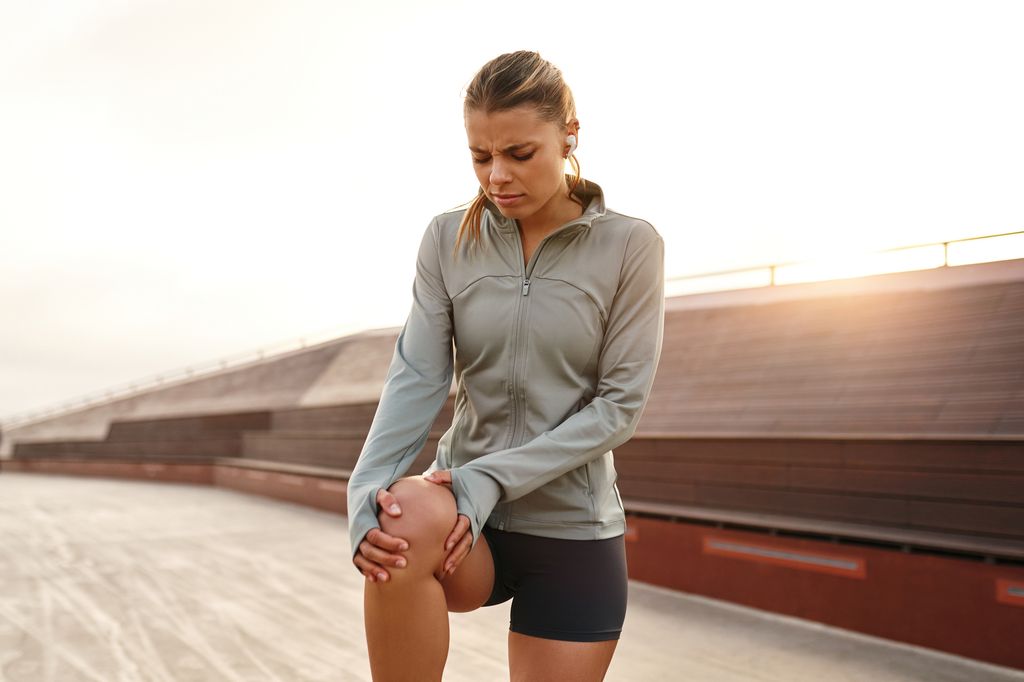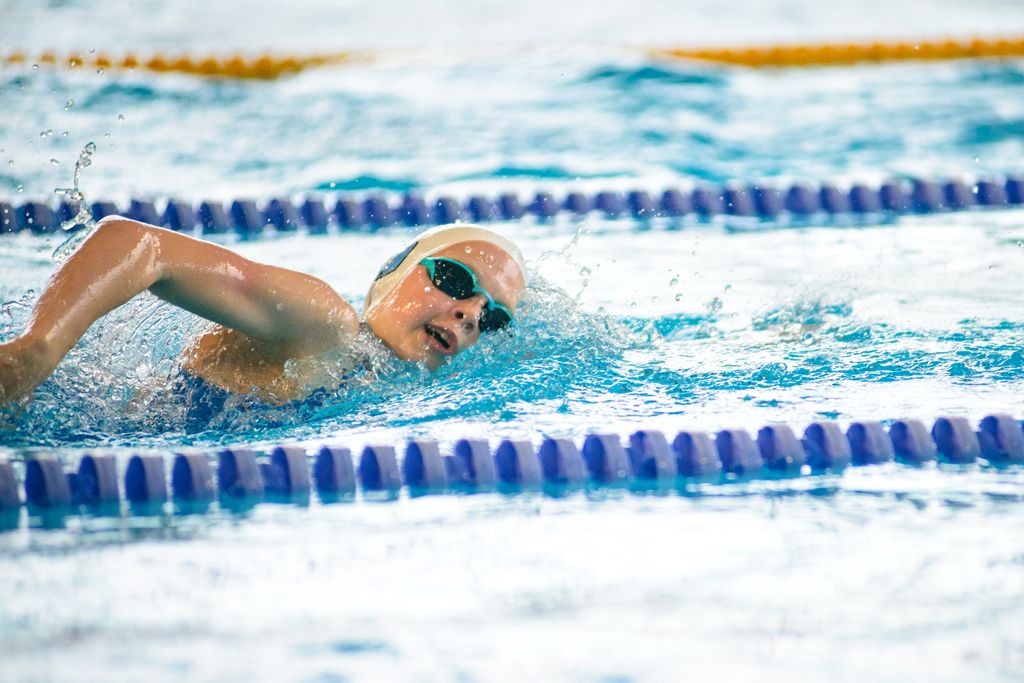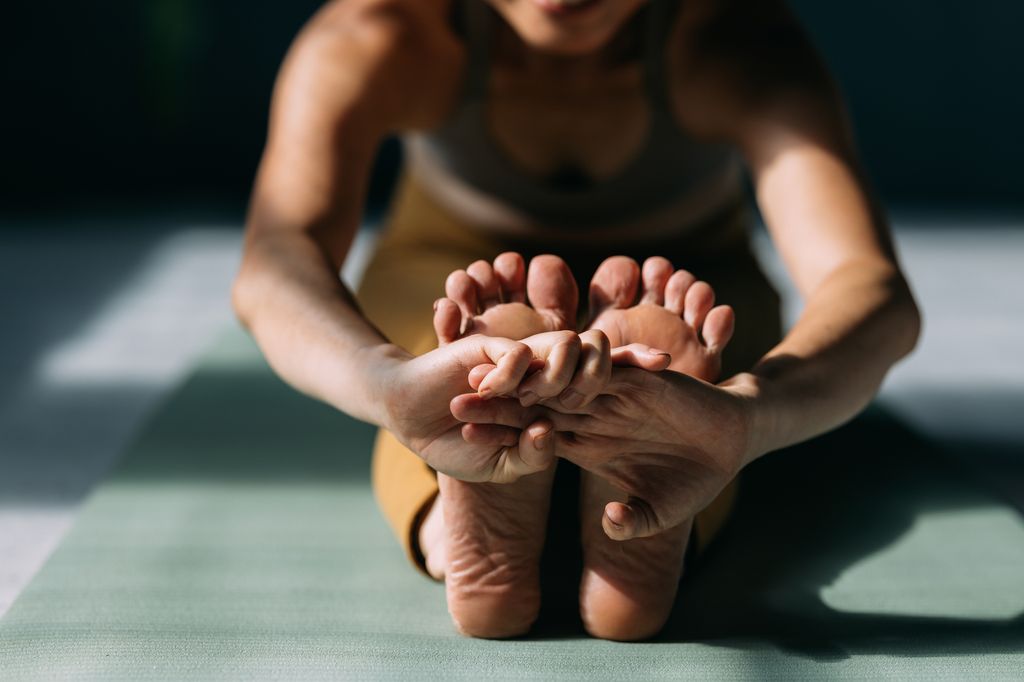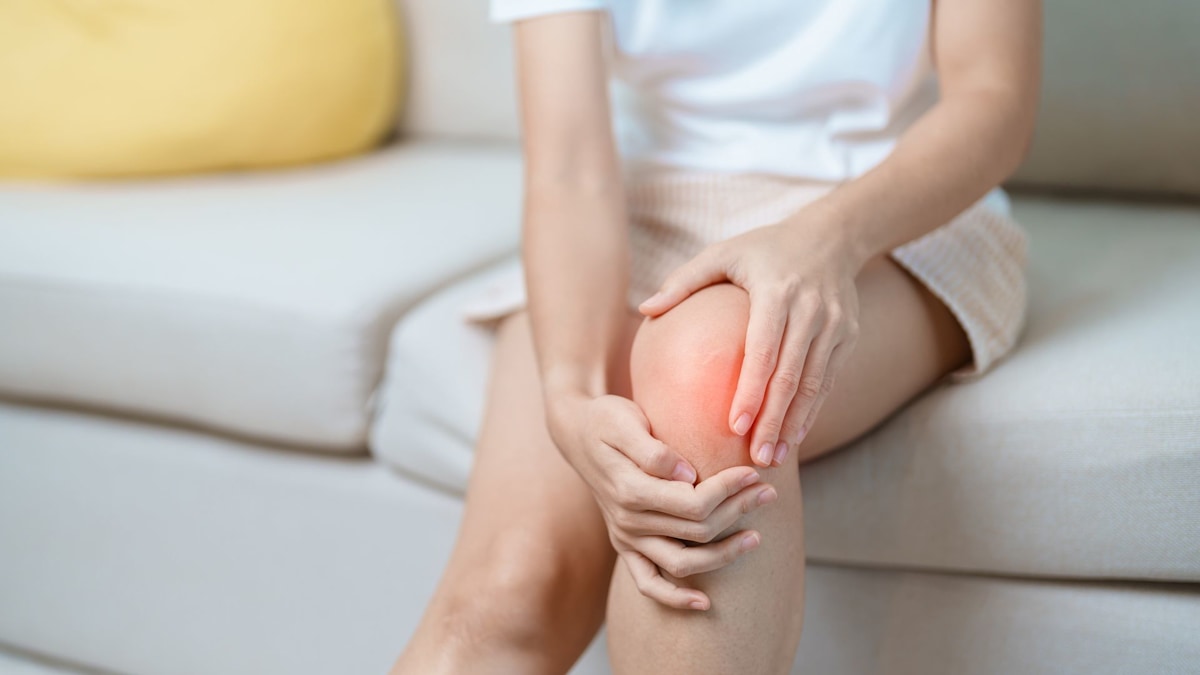Struggling with knee pain? Whether it’s due to an injury, ageing or a condition like arthritis, there’s no doubt that it can be uncomfortable and have an impact on everyday life. But in many cases, a targeted exercise routine and focus on strengthening and stretching can help with knee pain and prevent it from recurring. Learn how to support your knees safely with expert-approved exercises, along with the ones to avoid.
Why is knee pain so common?
“The knee absorbs three to six times our body weight during activities like running and climbing stairs, and does so with less inherent stability than the hip joint, making it a common source of pain and discomfort,” Amanda Grimm, a personal trainer and sports massage therapist with Knead Massage, says. “The knee sits between two major joints (the hip and ankle), making it vulnerable when either fails to function properly. Muscle imbalances are also common, especially in those living sedentary lifestyles, and issues like weak glutes and quads can lead to less stability in the knee joint, further raising the risk of injury or pain.”
 © Getty ImagesKnee pain can be caused by lots of different issues, such as injury or aging
© Getty ImagesKnee pain can be caused by lots of different issues, such as injury or aging
The personal trainer also says that ageing can contribute to knee pain. “Our knees’ protective cartilage degrades over time, we lose some of the cushioning synovial fluid in the knee joint, and often lose muscle mass too, all of which can contribute to issues with the knee,” Amanda explains.
Can knee pain go away with exercise?
It may be tempting to avoid exercise when you’re dealing with knee pain, but this may actually be counterintuitive, according to Dr. Milica McDowell, a Doctor of Physical Therapy and Exercise Physiologist. “The stronger your legs and (sportingly your core) are, the less likely you’ll have knee pain. The muscles around the knee (quads and hamstrings), the muscles that control the leg (hip stabilisers and glutes), and even your abs have been shown to help support the knee and reduce pain if they are strengthened consistently. Exercises are one of the key ways to help reduce intensity, frequency and severity of knee pain,” she says.
However, Amanda warns that the effectiveness of exercise depends on the cause of your knee pain, too. “Structural damage won’t usually be helped by exercise, but mechanical issues caused by weakness, tightness, or poor movement patterns can all be helped with appropriate exercise.
Strategic loading can strengthen the stabilising structures surrounding the knee, and can even promote improved cartilage health,” the sports massage therapist says. “Generally speaking, around 70 per cent of non-traumatic knee pain will respond positively to six to 12 weeks of progressive resistance training.”
Low-impact cardio for sore knees
Trading high-impact exercises such as running and jumping for lower-impact cardio alternatives is key when you’re trying to recover from knee pain. But which is best to avoid further pain? “Swimming is perhaps the lowest-impact cardio option of all, with the buoyancy of the water reducing the loads going through our joints by as much as 90 per cent. This also applies to pool walking, too, which can be a fantastic option for people struggling with knee pain,” Amanda says. “Cycling is another great option, offering a smooth motion for the knee without the repeated stress of impact found in running or walking.”
 © Getty ImagesSwimming is a good low-impact cardio alternative when you have knee pain
© Getty ImagesSwimming is a good low-impact cardio alternative when you have knee pain
Strengthening moves for knee support
Meanwhile, strengthening the muscles around the knee can also help to reduce pain. Amanda recommends the following moves:
Terminal Knee Extensions: Terminal Knee Extensions (TKEs) are a great option to strengthen the knee. TKEs target a teardrop-shaped muscle in your inner thigh (called the VMO), whose job is to ensure your kneecap tracks in a straight line when you’re straightening your leg. To complete TKEs, anchor a resistance band to something sturdy, then step into the band and position it behind your knee. Step back enough to create some tension in the band, then simply perform small pulses to straighten your leg while squeezing your inner thigh. It’s a small movement, which minimises stress on the joint. Aim to complete 3 sets of 15-20 repetitions.
Clamshells: Clamshells are a great option if you find your knees tend to cave inward when you squat or climb stairs. This is known as valgus collapse, and is a common source of knee pain. Valgus collapse is typically caused by weak glutes, specifically the glute medius, and can be targeted very effectively with clamshells. To complete a clamshell, lie on your side with your knees bent, and keeping your feet together, lift your top knee (like opening a clamshell). You should feel this movement in your glutes, not in your knee.
Stretching for flexibility and joint relief
 © Getty ImagesDaily stretching is also important to ease knee pain
© Getty ImagesDaily stretching is also important to ease knee pain
Stretching is another non-negotiable when it comes to tackling knee pain. “Improving knee mobility can help reduce pain,” Dr. Milica says. “Working to restore full knee extension (straightened position) and full knee flexion (around 120 degrees of bending) are important metrics to shoot for to help reduce pain.”
What exercises should be avoided with knee pain?
Finally, there are some moves that are best avoided when you’re trying to resolve existing knee pain and prevent further damage, as Dr. Milica explains: “Jumping. Heavy weight lifting if you haven’t worked up to it over months or years. Lunging with heavy weights, and sprinting (unless you play a sport that requires it).”

